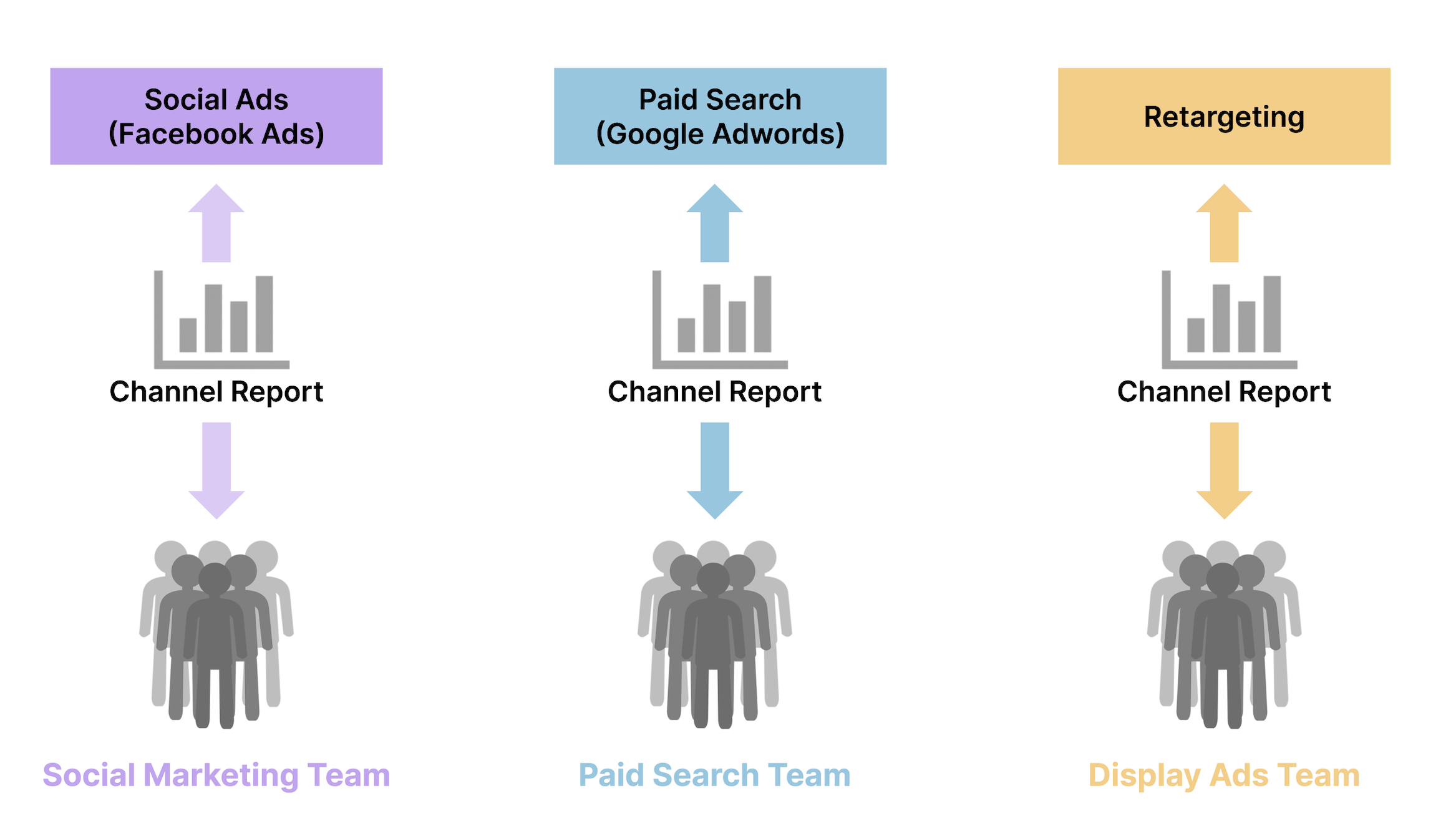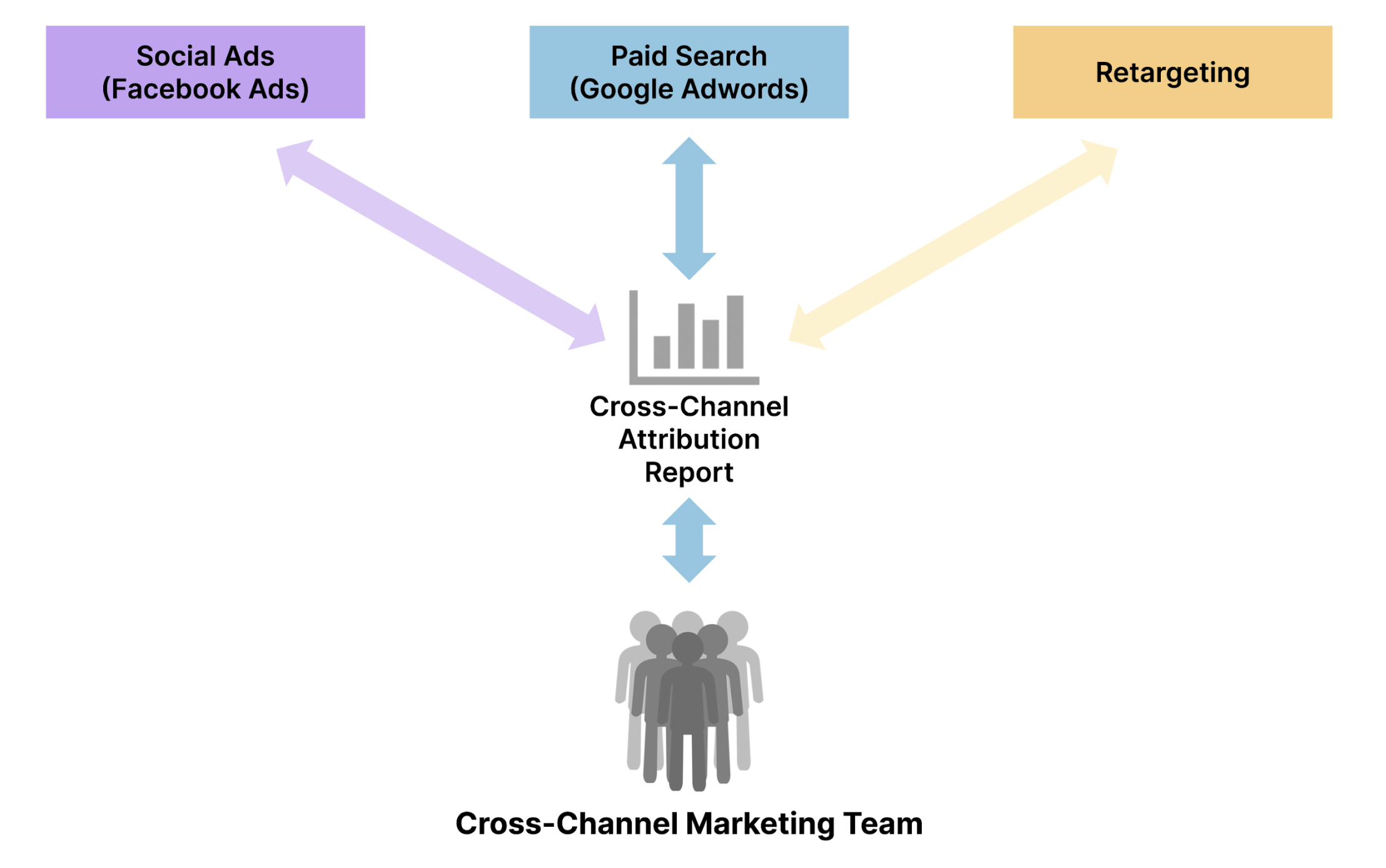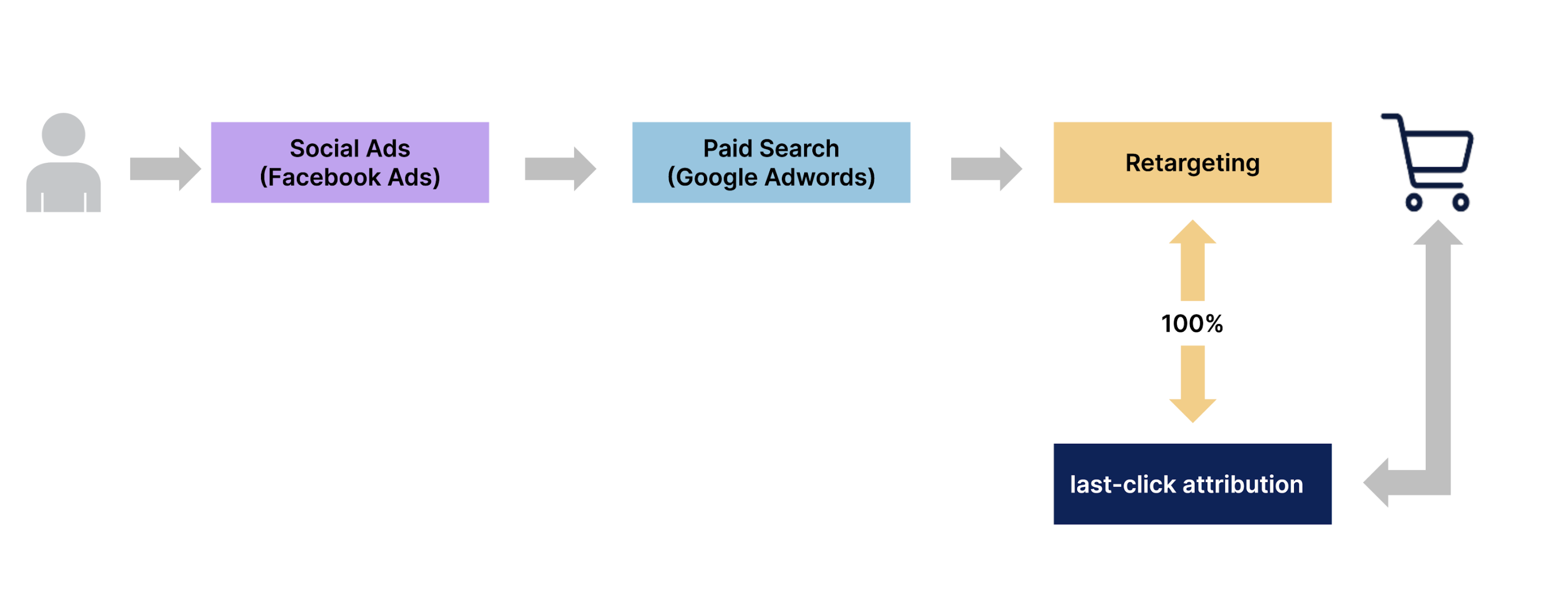Marketing has undergone a profound transformation over the last decade, and how we measure our strategies is no exception. Traditional channels like television, print, and mailings have given way to a dynamic landscape where messages are synchronized across diverse digital platforms. This shift in marketing has fundamentally changed how businesses connect with their audience.
One critical aspect of this transformation is the evolving nature of attribution modeling and how it interplays with multi-channel marketing. In the past, marketing channels operated independently, leading to fragmented strategies and incomplete reporting. Channels like television, print, radio, and direct mail had their own teams and metrics. The lack of integration often resulted in inaccurate attribution and missed opportunities for synergy among channels.
In this article, we'll explore the world of multi-channel and cross-channel marketing, attribution modeling, and how these concepts have become central to accurately measuring activities across different mediums. Let’s get into it;
What is Multi-, Cross- and Omni-Channel Marketing?
Multi-Channel Marketing: This involves leveraging multiple marketing channels to engage with your audience. Each channel operates independently, often with separate teams and reporting dashboards. This approach may employ last-click or first-click attribution models, sometimes leading to missed opportunities for optimizing channel interactions.

Cross-Channel Marketing: This takes a more coordinated approach. It entails orchestrating various marketing channels while considering how these channels interact with one another. In the cross-channel landscape, understanding the impact of each marketing touchpoint on a specific customer's journey is essential. This approach relies on consolidated cross-channel marketing reports based on multi-touch, algorithmic attribution models.
Cross-channel marketing aims to deliver consistent and coordinated messages across different channels, ensuring a seamless experience for customers.
 Omni-Channel Marketing: This elevates the concept of cross-channel marketing by placing the customer at its core. In an omni-channel strategy, the objective is to create a holistic view of all customer touchpoints, regardless of the channel. Achieving this requires seamless integration of marketing platforms and channels through robust tools and systems.
Omni-Channel Marketing: This elevates the concept of cross-channel marketing by placing the customer at its core. In an omni-channel strategy, the objective is to create a holistic view of all customer touchpoints, regardless of the channel. Achieving this requires seamless integration of marketing platforms and channels through robust tools and systems.
The Limitations of Exclusive Attribution Models in Multi-Channel Marketing
In the earlier days of marketing, attribution models like last-click or first-click were widely used to determine the source of conversions. These models provided a simple way to credit a single touchpoint with a conversion. While these models served a purpose, they were far from ideal, especially in the context of multi-channel marketing. Here are just some of the limitations of exclusive attribution models;
1. Neglecting the Full Customer Journey
Last-click attribution models, like many traditional methods, have significant limitations when understanding the complex customer journey. They primarily credit the final touchpoint before conversion, neglecting the various touchpoints that influence a customer's decision along the way.
For instance, these models may give all the credit to the last touchpoint, like an email campaign, while overlooking the essential role played by earlier touchpoints, such as social media ads, in sparking the customer's initial interest. In multi-channel environments, where customers often engage with a brand across various platforms and channels, exclusive attribution models offer an incomplete and skewed view of the customer's interactions.
 2. Ineffective Resource Allocation
2. Ineffective Resource Allocation
Relying on older, exclusive attribution models could result in inefficient resource allocation. Using these models, marketers might incorrectly conclude that the last or first touchpoint is the most effective, leading to overinvestment in certain channels and potentially missing out on opportunities to optimize others.
3. Inconsistency in Customer Insights
Exclusive attribution models can produce inconsistent customer insights due to their limited focus on a single touchpoint. This oversimplification fails to capture the nuanced relationships between channels and touchpoints, making it challenging to comprehend the holistic customer journey.
As a result, marketers miss out on valuable insights into how various channels collaborate and contribute to conversions. This lack of depth in customer behavior analysis can hinder the development of highly targeted and effective multi-channel marketing strategies.
Thus, as multi-channel marketing evolved, it became evident that older attribution models, like last-click, were inadequate for capturing the complexity of customer journeys and the interplay of various channels.
This realization led to the development and adoption of more sophisticated attribution models that could provide a more accurate representation of each channel's contribution, such as algorithmic attribution and unified marketing measurement, which we'll explore in more detail later in this article.
How Does Attribution Modeling Drive Multi-Channel Success?
- Understanding the Multi-Channel Journey
Consumers interact with brands across various channels, from social media and search engines to email, websites, and even in-person experiences. This means that customers rarely follow a linear path to conversion. They may start by discovering a brand on social media, researching products on the website, receiving an email promotion, and ultimately making a purchase in a physical store. This non-linear, cross-channel journey makes it challenging to determine the role of each touchpoint in the decision-making process. That is where modern attribution models come into play, particularly algorithmic attribution, which offers a comprehensive understanding of how each touchpoint contributes to the multi-channel success of businesses and marketers.
- Cross-Channel Analytics
A critical component of data-driven decision-making is cross-channel analytics, which equips businesses with the tools to harmonize data from diverse marketing channels. This process offers a comprehensive view of the customer journey, regardless of the channel. Cross-channel analytics provides invaluable insights into which channels prove most effective at different stages of the sales funnel.
Armed with this knowledge, marketers can make informed decisions regarding channel selection, budget allocation, and the maintenance of consistent messaging. For instance, it may reveal that social media excels at building initial brand awareness, while email marketing shines when nurturing leads further down the funnel.
- The Power of Advanced Analytics and AI
In recent times, advanced analytics and artificial intelligence (AI) have become invaluable partners in marketing measurement. These cutting-edge technologies offer the capacity to extract meaningful insights from the immense volume of data available, elevating marketing attribution to new heights.
AI, in particular, plays a pivotal role in deciphering consumer behavior and automating strategic decisions including where to put your marketing dollars. Machine learning algorithms within AI can delve into historical data, anticipate forthcoming trends, and, notably, provide precise recommendations for tailoring multi-channel marketing strategies. For instance, this type of technology can attribute conversions to social views, meaning businesses no longer need to rely on clicks solely.
- Transparency and Data Handling with UMM
As third-party cookies, which were used for tracking and data collection, become obsolete, businesses are adopting more transparent and consumer-friendly data practices to ensure they continue to deliver personalized and relevant experiences.
For instance, measuring display ads without third-party cookies is now a reality facing marketers in this new realm of marketing measurement. This means many marketers will have to turn to alternative solutions such as unified marketing measurement for tracking multi-channel strategies.
Unified Marketing Measurement (UMM) seamlessly integrates data from multiple marketing channels, encompassing digital display advertising, all while adhering to privacy regulations and ethical data practices, including GDPR and CCPA. This commitment ensures that consumer data is gathered and utilized transparently, always with explicit consent.
UMM employs advanced statistical modeling methods such as time-series analysis, regression analysis, and marketing mix modeling to assess the influence of marketing efforts, even in cases where only aggregated data is accessible. This capability enables the evaluation of offline marketing channels, such as print and out-of-home (OOH), at a granular level within the user and customer journey.
In the broader context of multi-channel marketing, UMM assumes a prominent role. It serves as a facilitator for data integration across diverse channels, resulting in a holistic perspective of the customer journey. Thus, allowing marketers to access a holistic and unified means of estimating display ad impact on conversions and sales.
Navigating Multi-Channel Success with Marketing Attribution
In a multi-channel world, marketing attribution is the key to understanding your success. It empowers you to optimize strategies, allocate resources efficiently across different channels, and enhance customer experiences.
As traditional attribution models fall short and third-party cookies vanish, the marketing landscape is changing - once again. At Adtriba, we specialize in navigating this complexity with cutting-edge algorithmic attribution, such as unified marketing measurement. We provide insights that help you thrive in this evolving environment. Get in touch with us today to transform your multi-channel marketing strategies and drive future success!